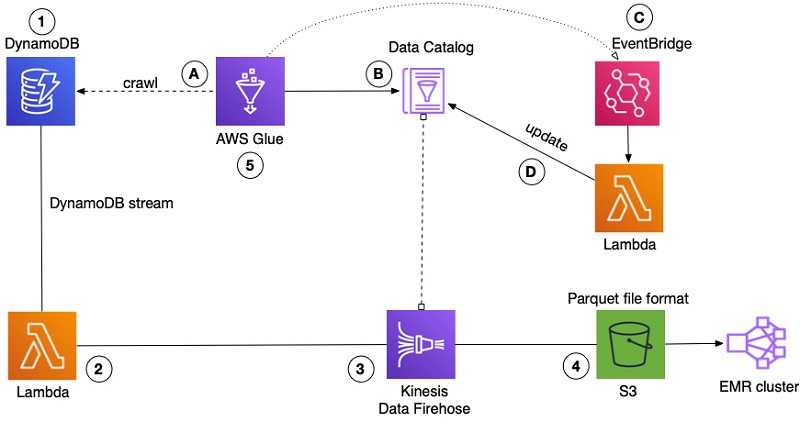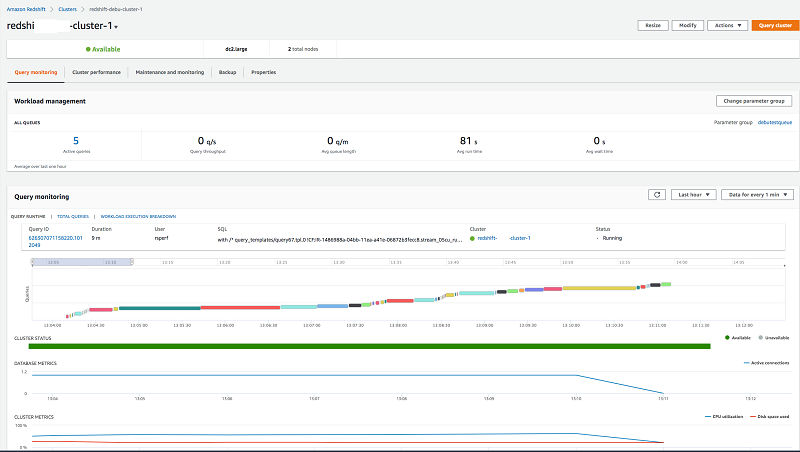AWS Big Data Blog
Category: Database
Lower your costs with the new pause and resume actions on Amazon Redshift
Today’s analytics workloads typically require a data warehouse to be available 24 hours a day, 7 days a week. However, there may be times when you need an Amazon Redshift cluster for a short duration of time at frequent (or infrequent) intervals. For example, you may run a periodic ETL job or use a cluster […]
How Siemens built a fully managed scheduling mechanism for updates on Amazon S3 data lakes
Siemens is a global technology leader with more than 370,000 employees and 170 years of experience. To protect Siemens from cybercrime, the Siemens Cyber Defense Center (CDC) continuously monitors Siemens’ networks and assets. To handle the resulting enormous data load, the CDC built a next-generation threat detection and analysis platform called ARGOS. ARGOS is a […]
Analyze your Amazon S3 spend using AWS Glue and Amazon Redshift
The AWS Cost & Usage Report (CUR) tracks your AWS usage and provides estimated charges associated with that usage. You can configure this report to present the data at hourly or daily intervals, and it is updated at least one time per day until it is finalized at the end of the billing period. The […]
How FactSet automated exporting data from Amazon DynamoDB to Amazon S3 Parquet to build a data analytics platform
February 9, 2024: Amazon Kinesis Data Firehose has been renamed to Amazon Data Firehose. Read the AWS What’s New post to learn more. This is a guest post by Arvind Godbole, Lead Software Engineer with FactSet and Tarik Makota, AWS Principal Solutions Architect. In their own words “FactSet creates flexible, open data and software solutions […]
Amazon Redshift at re:Invent 2019
The annual AWS re:Invent learning conference is an exciting time full of new product and program launches. At the first re:Invent conference in 2012, AWS announced Amazon Redshift. Since then, tens of thousands of customers have started using Amazon Redshift as their cloud data warehouse. In 2019, AWS shared several significant launches and dozens of […]
Maximize data ingestion and reporting performance on Amazon Redshift
This is a guest post from ZS. In their own words, “ZS is a professional services firm that works closely with companies to help develop and deliver products and solutions that drive customer value and company results. ZS engagements involve a blend of technology, consulting, analytics, and operations, and are targeted toward improving the commercial […]
Working with nested data types using Amazon Redshift Spectrum
Redshift Spectrum is a feature of Amazon Redshift that allows you to query data stored on Amazon S3 directly and supports nested data types. This post discusses which use cases can benefit from nested data types, how to use Amazon Redshift Spectrum with nested data types to achieve excellent performance and storage efficiency, and some […]
ETL and ELT design patterns for modern data architecture using Amazon Redshift: Part 2
New: Read Amazon Redshift continues its price-performance leadership to learn what analytic workload trends we’re seeing from Amazon Redshift customers, new capabilities we have launched to improve Redshift’s price-performance, and the results from the latest benchmarks. Part 1 of this multi-post series, ETL and ELT design patterns for modern data architecture using Amazon Redshift: Part 1, […]
ETL and ELT design patterns for lake house architecture using Amazon Redshift: Part 1
New: Read Amazon Redshift continues its price-performance leadership to learn what analytic workload trends we’re seeing from Amazon Redshift customers, new capabilities we have launched to improve Redshift’s price-performance, and the results from the latest benchmarks. Part 1 of this multi-post series discusses design best practices for building scalable ETL (extract, transform, load) and ELT (extract, […]
Simplify management of Amazon Redshift clusters with the Redshift console
Amazon Redshift is the most popular and the fastest cloud data warehouse. It includes a console for administrators to create, configure, and manage Amazon Redshift clusters. The new Amazon Redshift console modernizes the user interface and adds several features to improve managing your clusters and workloads running on clusters. The new Amazon Redshift console provides visibility to the health and performance of clusters from a unified dashboard, simplified management of clusters by streamlining several screens and flows, improved mean-time-to-diagnose query performance issues by adding capabilities to monitor user queries and correlate with cluster performance metrics, as well as the ability for non-admin users to use Query Editor.









